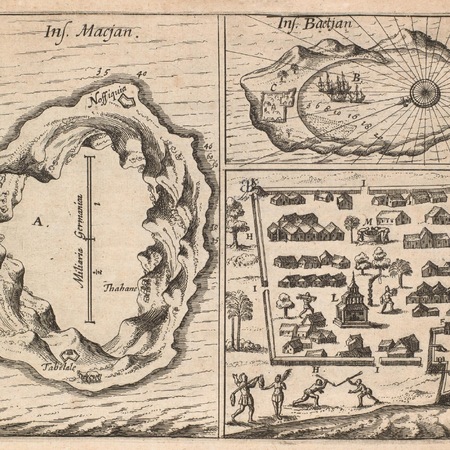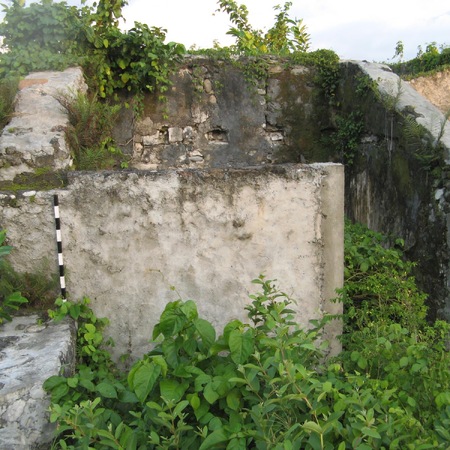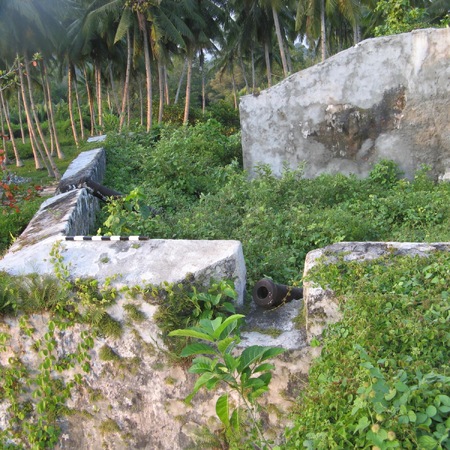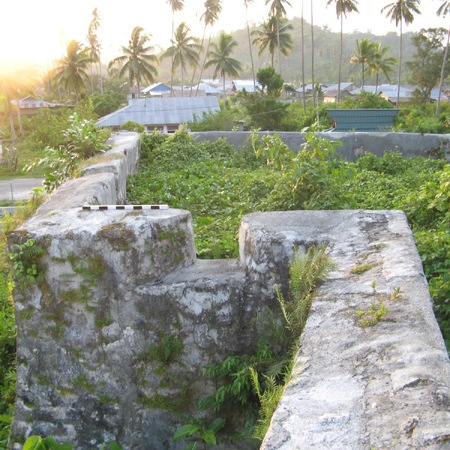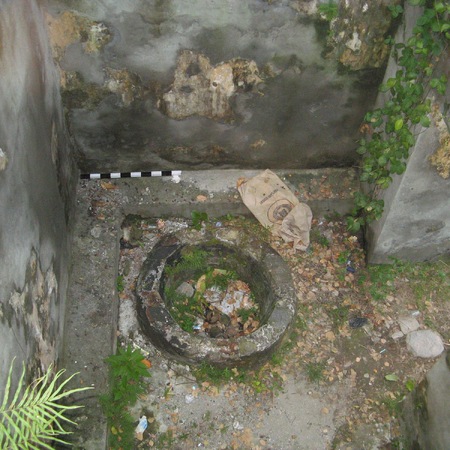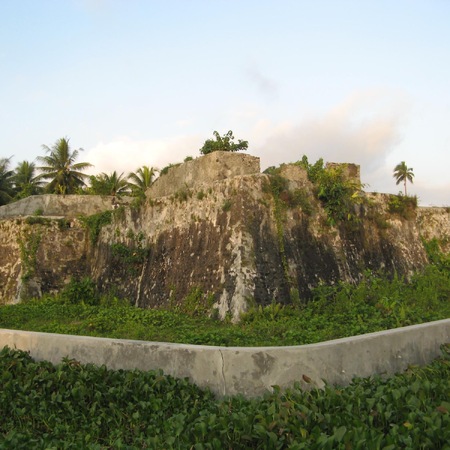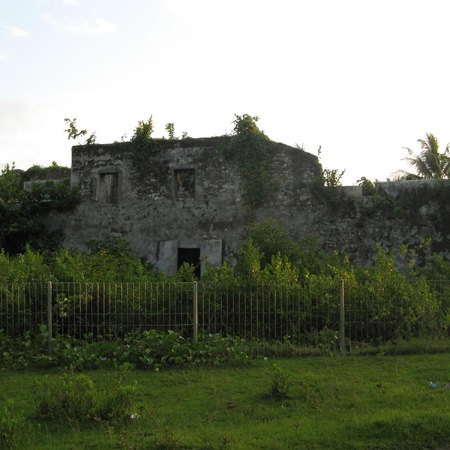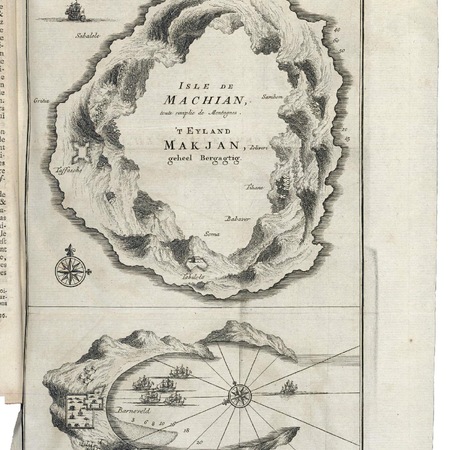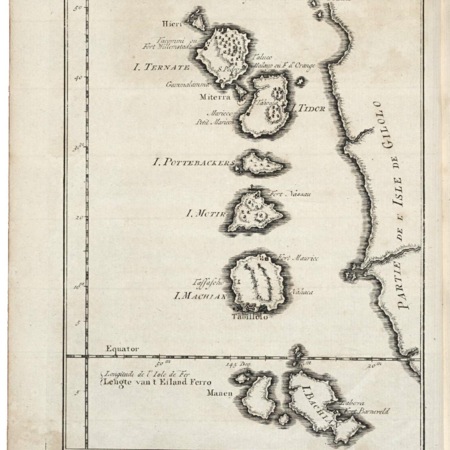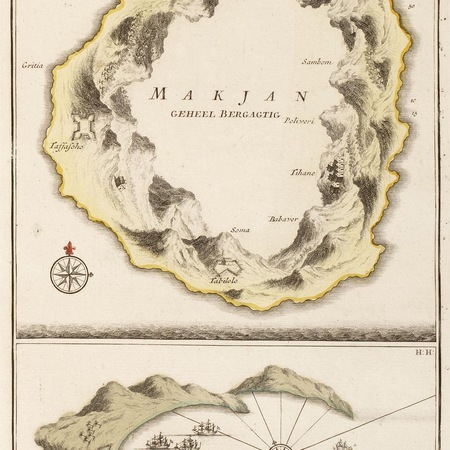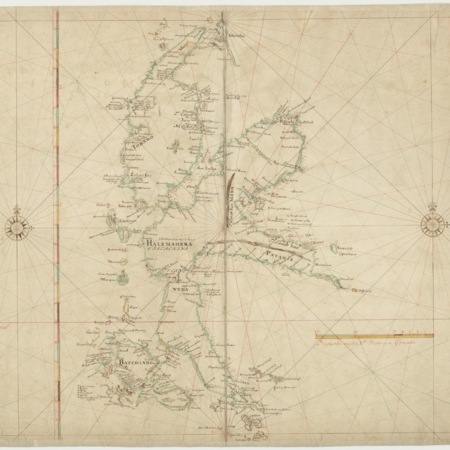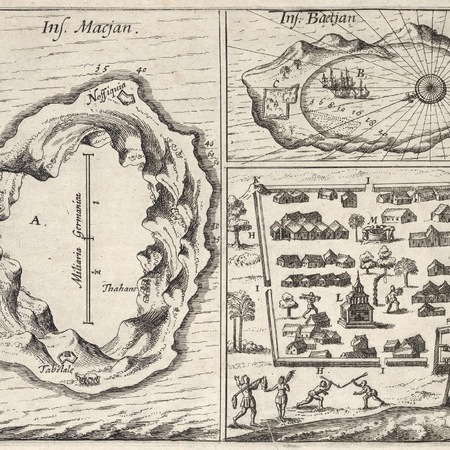In 1558 the Portuguese arrived at Labuha in the South Peninsula of Bacan Island, where they built a fort. Afterwards the Spaniards took over the fort. Around the fort lived circa 80 native people, who had become Christians.
In November 1609 a Dutch fleet under command of rear admiral Simon Jansz Hoen and ships with the Sultan of Ternate and his soldiers arrived before Labua. The attackers under command of Captain Louis Schot stormed the fort. All the people inside, man, woman and children, were massacred.
Hoen strengthened the fort by building four stone bastions filled with earth. On the terre-plein (courtyard) a strong square building with walls of one foot thick was erected. The lower floor was used as a storage for provisions, merchandise and gunpowder. The second floor was used as corps de garde (guard room) of the soldiers. The well inside the fort didn’t yield enough water. Every day drinking-water had to be carried from the river to the fort. This was acceptable in time of peace but not during a siege. A small lodge outside the fort was used for the sale of merchandise.
In December 1609 the fleet left Bacian. Senior merchant Adriaan Dusses and 50 Europeans stayed behind in the fort, which was called Barneveld. In this period about 50 Europeans, including a merchant, an officer and a teacher, several slaves and a 25 Chinese, lived inside in the fort.
In 1627 a conspiracy of local people to raid the fort, kill everyone inside and hand the fort to the Spaniards was discovered. As a safety measure the members of the garrison afterwards no longer attended church in the village but held their religious serves inside the compound.
In 1696 the Dutch handed over Fort Barneveld to Sultan Alawaddien of
Ternate. One sergeant and six soldiers stayed behind to keen an eye on the new owner. The next years the Sultan asked the Company several times to send a garrison or give him gunpowder and arms to defend the fort. It was not before 1733 that the VOC decided to quarter soldiers at Barneveld again, in order to prevent illegal trade.
Around 1860 the fort had a small garrison. In 1888 a fire caused much damage. The buildings were apparently repaired, as Victor Ido van de Wall, who visited Barneveld in the 1920s, wrote that fort was in a good condition. Today the fort is in ruins.
